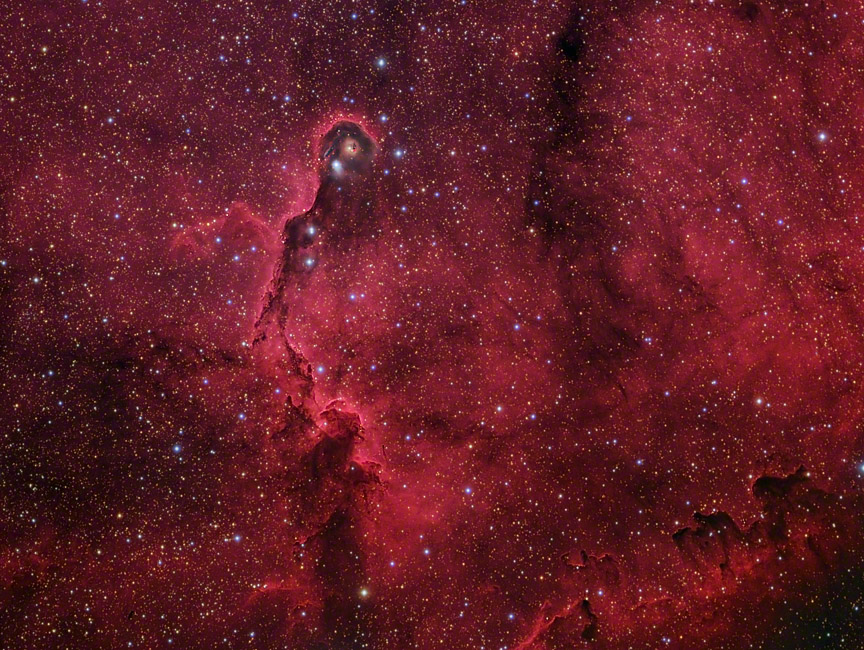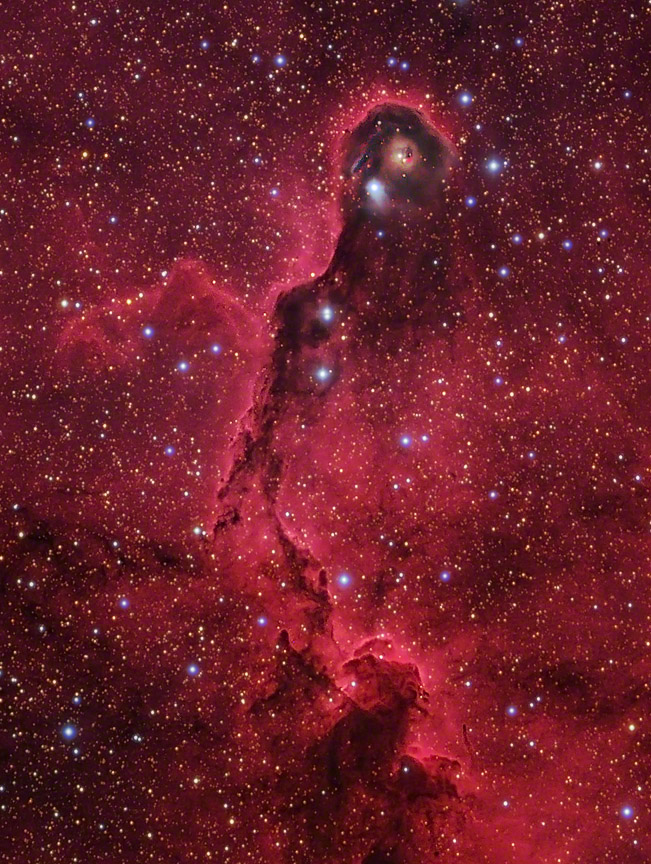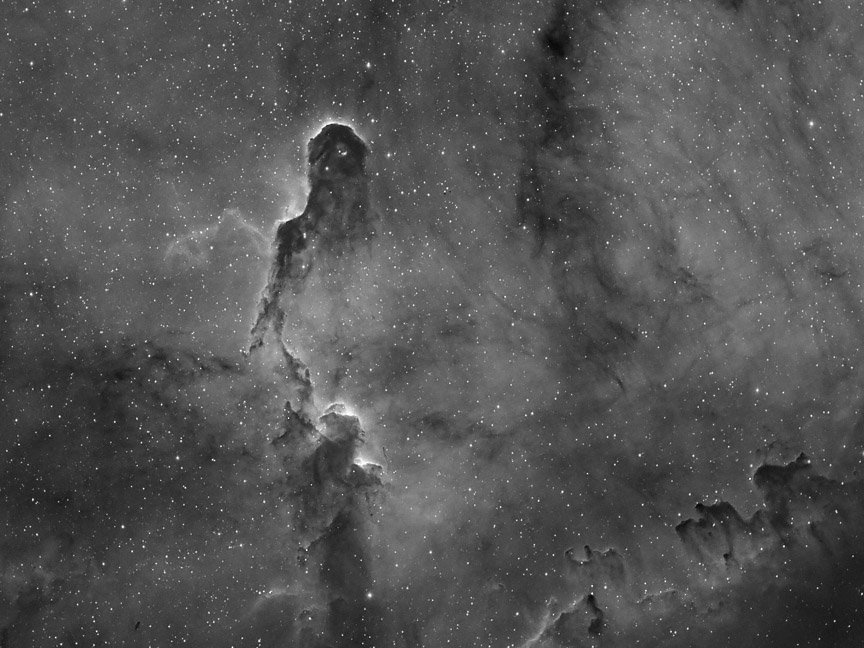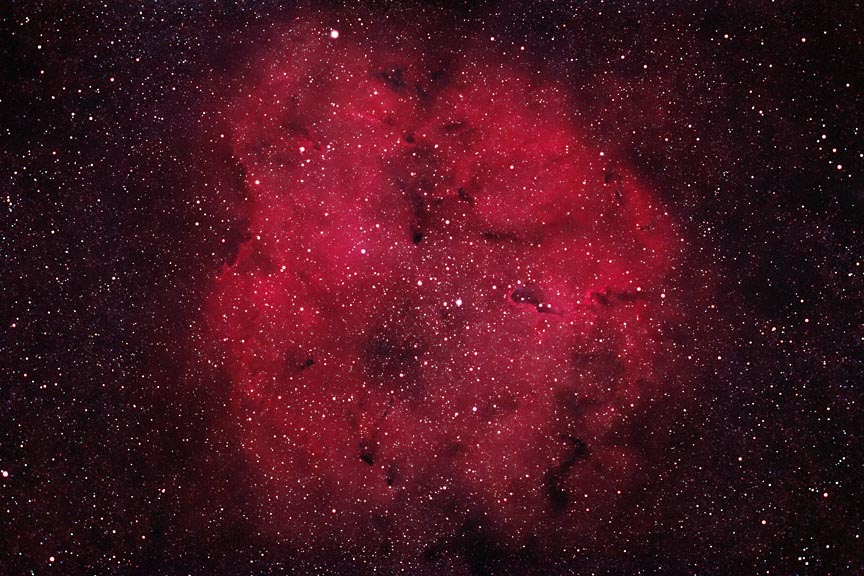

| 
|

Dark clouds of gas and dust are silhouetted against the glowing hydrogen gas of emission nebula IC1396. The Elephant Trunk Nebula, left of center above, is a dark globule located on the western edge of IC1396. Stellar winds and ultraviolet light from a hot, young star above the trunk are compressing the gas and dust in the globule and triggering new star formation in its depths. The stellar winds are eroding the less-dense gas and dust around the globule, leaving the "elephant trunk" behind it. Similar elephant trunks can be seen in CED 214, the Eagle nebula, NGC 6820, and the Pelican nebula. More detail of the Elephant Trunk Nebula and an overview of IC1396 are shown below.
160 minutes L and 144 minutes RGB on 2014-09-23, plus 240 minutes Ha on 2011-11-01 using an Astrodon 3 nm H-a filter (blended with L and R), all using a QSI 583 from northern New Jersey through an Astro-Physics 155mm refractor at f5.4. North is to the right. ©2014

A detail from the above image of the Elephant Trunk Nebula.

The Elephant Trunk Nebula in narrowband hydrogen-alpha light.
240 minutes through an Astrodon 3 nm H-a filter using a QSI 583 on 2011-11-01 from northern New Jersey through an Astro-Physics 155mm refractor at f5.4. North is to the right. ©2011

Covering more than 6 times the diameter of the full moon on the sky, IC 1396 is one of the largest-appearing emission nebulae. The Elephant Trunk is right of center in this older, film-based image. IC 1396 is in the constellation Cepheus.
Astro-Physics 105mm (4.1 inch) refractor at f4.5. Three twenty-five minute exposures on gas-hypersensitized Kodak Supra 400 color negative film. August 8, 2002 from Speculator, NY. North is up. ©2002
| |||||||||||||||||
|
Astrophotography Books – Astronomy Books |








